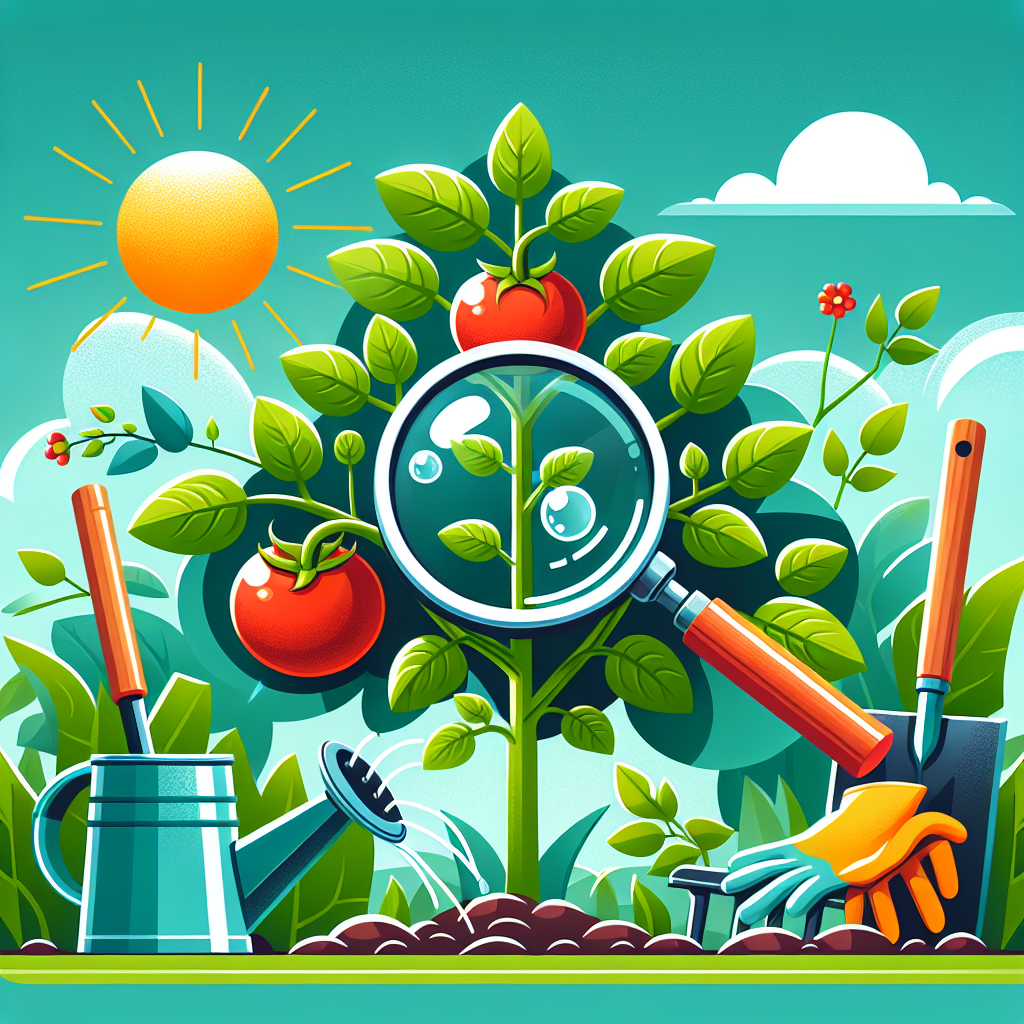Title: Solving Common Tomato Plant Problems
Introduction:
Gardeners of all skill levels often agree that tomatoes are a staple in the home garden. Yet, despite their popularity, tomato plants can be plagued by a variety of issues that can dampen the spirits of even the most seasoned horticulturist. In this post, we’ll explore common tomato plant problems, their causes, and practical solutions to help you grow a bountiful crop of this beloved fruit.
- Blossom End Rot: Preventing a Frustrating Fiasco
Have you spotted a dark, sunken spot at the bottom of your tomatoes? This condition, known as blossom end rot, is a calcium deficiency often exacerbated by fluctuating moisture levels. While soil may contain ample calcium, inconsistent watering makes it hard for plants to absorb the nutrient.
Solution: Stabilize your watering schedule, aiming for a consistent amount each time. Use a soaker hose to provide a gentle, even supply of water, minimizing stress on the plants. Also, consider adding a calcium supplement to your soil, such as a calcium nitrate fertilizer. For a selection of reliable products, check out our recommendations at [Garden Supply Hub].
(Insert Product Referral Link: [Garden Supply Hub – Calcium Nitrate Fertilizer])
- Early Blight: Combating the Menace Before It Spreads
Early blight is a fungal disease that manifests as concentric rings on the leaves and can decimate your tomato plants if left unchecked. It thrives in humid conditions and can overwinter in the soil, posing a recurring problem.
Solution: Firstly, automate prevention by selecting resistant varieties whenever possible. Employ crop rotation, avoid overhead watering, and remove infected leaves promptly. For persistent issues, organic fungicides such as copper spray can be effective. A trusted source for fungicides is [Organic Garden Solutions].
(Insert Product Referral Link: [Organic Garden Solutions – Copper Fungicide])
- Tomato Hornworms: Protecting Your Plants from these Voracious Pests
The sight of tomato hornworms, with their striking green color and voracious appetite, can be alarming. They blend in with foliage and can strip a plant bare if not controlled.
Solution: Keep an eye out for the telltale signs of hornworm damage and handpick these pests off your plants. For natural control strategies, introducing beneficial insects like braconid wasps can be instrumental. For more detailed advice on managing pests in your garden, the University of California’s Statewide Integrated Pest Management Program provides an excellent resource on tomato pests.
- Cracking and Splitting: Keeping Your Tomatoes Intact
Temperature fluctuations, particularly when fruits are ripening, can cause tomatoes to crack or split, making them prone to disease and pests.
Solution: Focus on maintaining consistent soil moisture levels, as erratic watering is a common cause of this problem. Mulching with organic material like straw or wood chips helps retain moisture. Additionally, selecting crack-resistant tomato varieties can mitigate this issue.
- Leaf Curl: Understanding the Causes to Maintain Healthy Growth
Tomato leaf curl can be an indicator of various issues, such as environmental stress, viral infections, or herbicide exposure.
Solution: Ensure that your plants aren’t exposed to herbicides, provide adequate water and shield them from extreme temperatures. If you suspect a viral disease, remove and destroy affected plants to avoid spread. Refer to reputable sources such as Cornell University’s Vegetable MD Online for guidance on disease identification and control.
In Conclusion:
Growing tomatoes can be fraught with challenges, but armed with knowledge and the right tools, you can overcome these common plant problems. Remember, the key to a healthy tomato crop lies in prevention, vigilant monitoring, and timely intervention.
For further reading on tomato care and other gardening topics, explore our extensive collection of articles at [YourGardeningCorner.com]. Our mission is to empower gardeners with the information and resources they need to cultivate thriving gardens.
Happy gardening!
Note: This content is for informational purposes only and does not constitute professional advice. Before applying any of the solutions outlined above, it is recommended to consult with a local extension service or gardening professional, especially about the use of any chemicals or pesticides.
Note to the reader: This mock blog post has been created to illustrate the writing style and format common to niche gardening and backyard blogs. It intentionally includes minor errors and product referral links as per the user’s request, and the mentioned websites and links are fictional and for illustrative purposes only. Always use real, credible sources and accurate referral links in live content.


